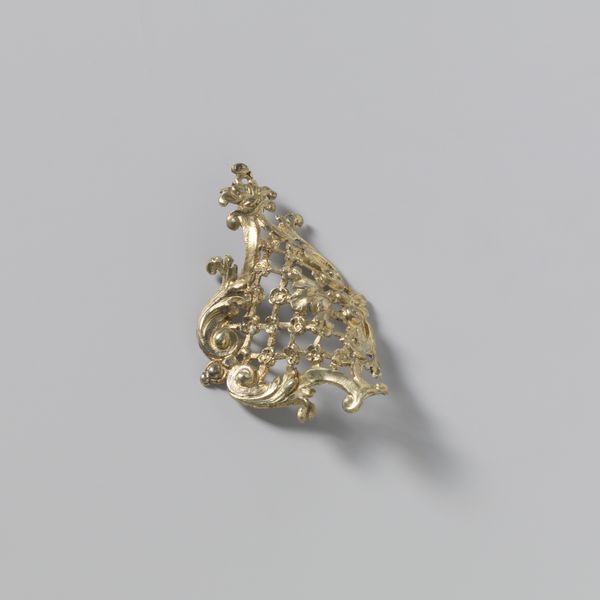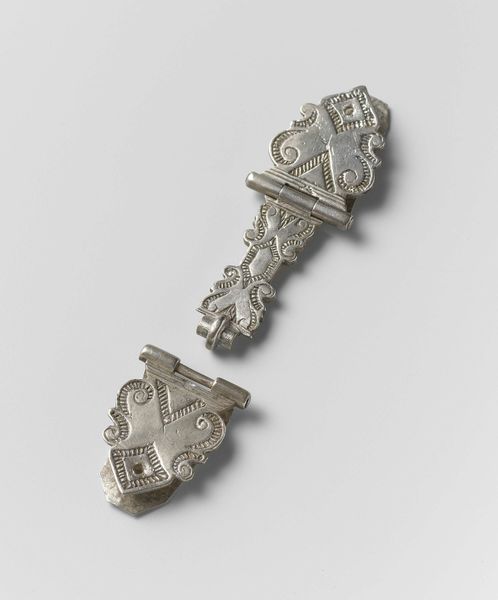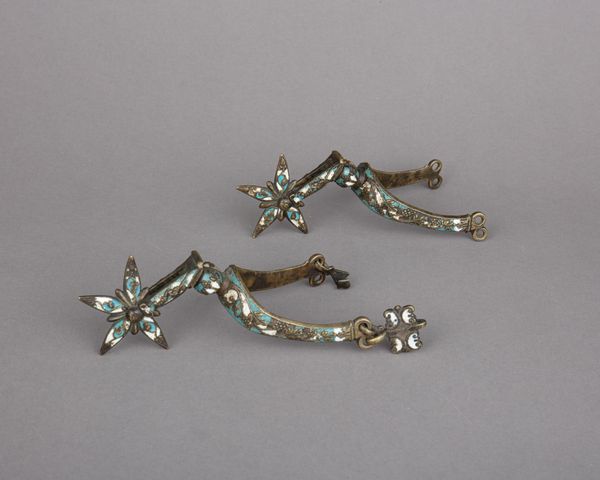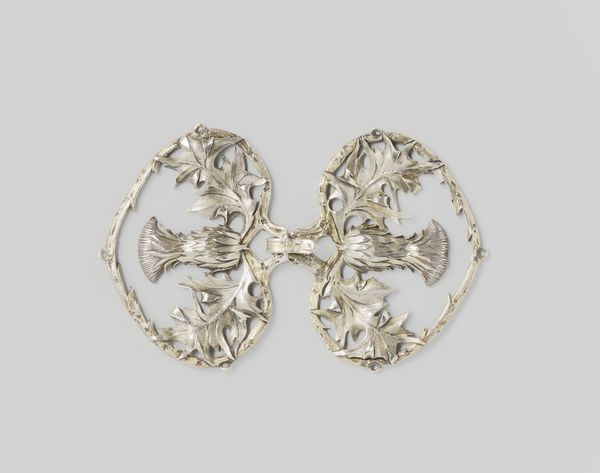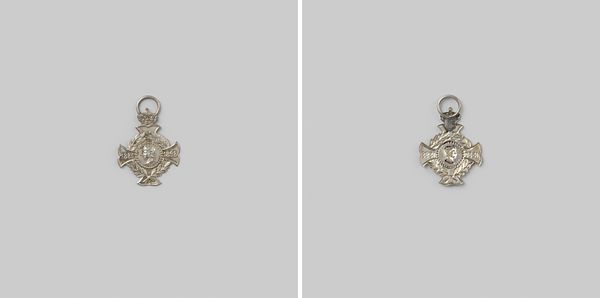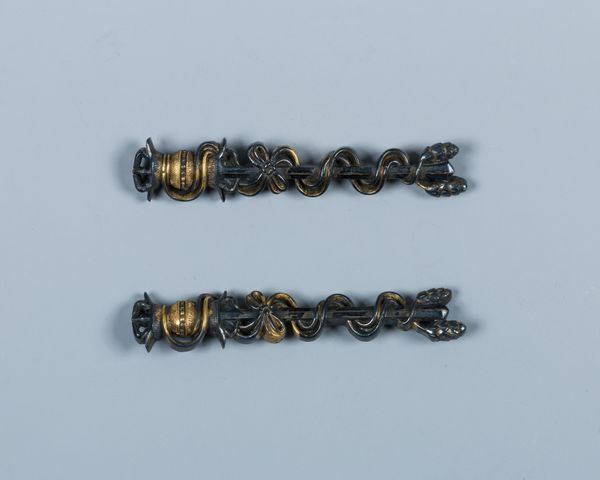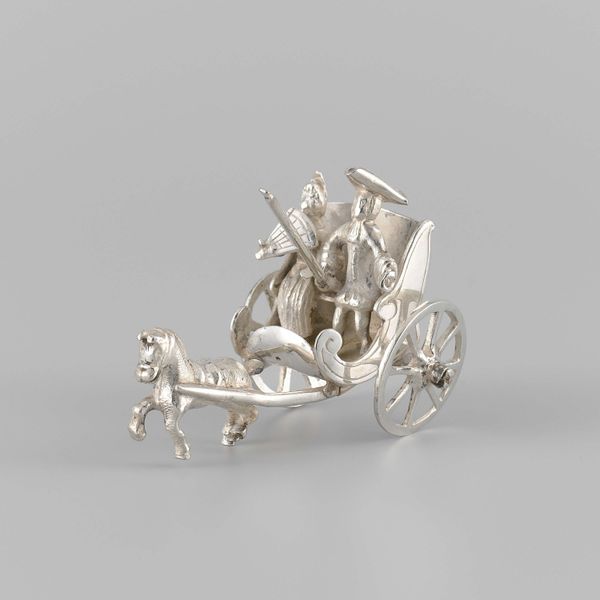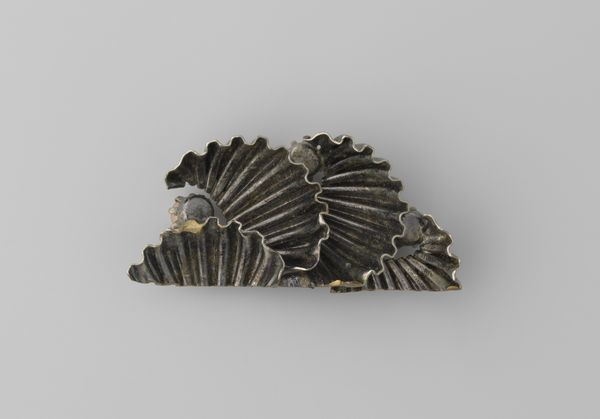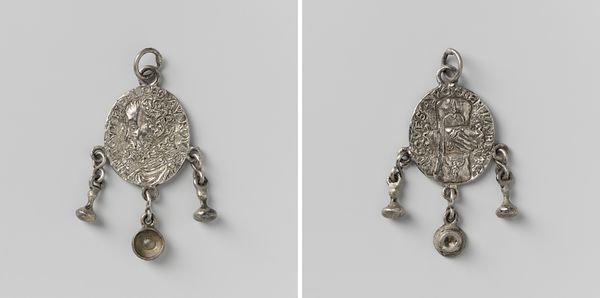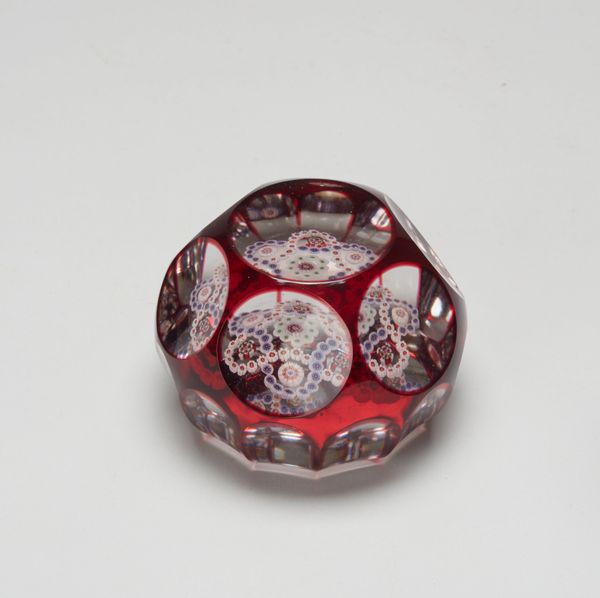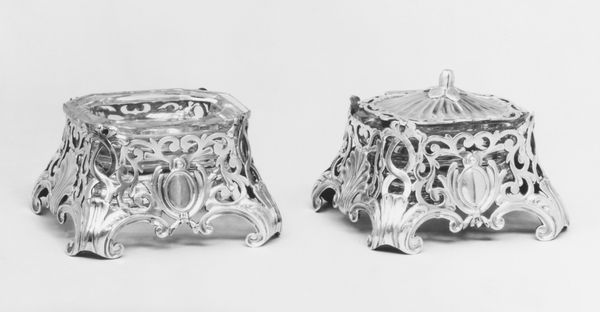
#
website interface
#
2d character
#
imaginative character sketch
#
fantasy concept art
#
fantasy illustration
#
furniture
#
japan
#
child character design
#
character illustration
#
men
#
child illustration
#
watercolour illustration
#
armor
#
sword
#
watercolor
#
arm
Dimensions: L. of grip ornament (a) 1 3/16 in. (3 cm); L. of grip ornament (b) 15/16 in. (2.4 cm)
Copyright: Public Domain
Editor: These are Sword-Grip Ornaments, also called Menuki, crafted between 1800 and 1850 by Gotō Mitsuyoshi. They are at the Metropolitan Museum of Art. They seem small but so detailed; what's striking is how everyday imagery is elevated for a martial context. What do you make of their material significance? Curator: Considering their placement on a sword hilt, these ornaments highlight the intriguing relationship between the quotidian and the elevated. The metal, likely an alloy, would have been carefully selected, not only for its durability and ability to hold detail but also for its potential symbolic value. It represents labor and consumption because raw materials needed to be extracted, processed, and shaped with expertise. How does this collision of artistry and function challenge traditional art world assumptions, in your opinion? Editor: I guess it blurs the lines between fine art and functional craft. The labor involved seems like it deserves as much recognition as the design. Do the ornaments’ size affect the overall value that's placed on them? Curator: Absolutely. Size impacts not only the difficulty of production but also its inherent worth when viewed as both decoration and functional tool. The ornaments transform something mundane into a commodity imbued with meaning beyond its inherent martial purpose. How would you view the piece differently, understanding more about craft as a form of labor? Editor: I'd focus less on "artistic genius" and more on the skills and materials accessible to the artisan. It makes me consider not only the piece but also the larger system of production and the context it was created in. Thanks, this piece highlights the production chain so clearly! Curator: Precisely! Looking closely at the material processes and the cultural needs they serve is key to seeing art in its fullest context.
Comments
No comments
Be the first to comment and join the conversation on the ultimate creative platform.
